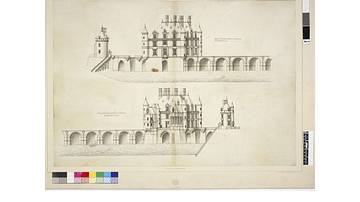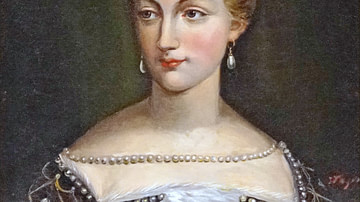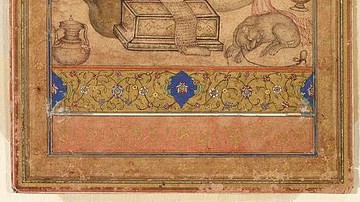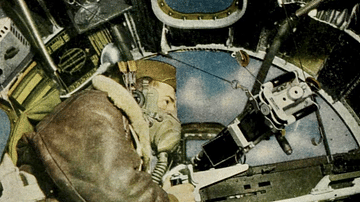Search Images
Browse Content (p. 153)

Image
Drawing of the Château de Chenonceau
Drawing of the Château de Chenonceau, Loire Valley, France c. 1570, by architect Jacques Androuet du Cerceau (1510-1585). This drawing shows the château as Diane de Poitiers, (1500-1566) favourite of Henry II of France (r. 1547-1559) would...

Image
Diane de Poitiers
Portrait of Diane de Poitiers (1500-1566), author unknown, Château de Chaumont-sur-Loire, France. Diane de Poitiers was the favourite of Henry II of France (r. 1547-1559) despite being almost 20 years older than him. She lived in the Château...

Image
Learned Man
Learned Man, miniature painting, ink and opaque watercolour on paper, using nim-qalam, which literally means the half-pen technique, by miniaturist Basawan, 1575-80.
Aga Khan Museum, Toronto.

Image
Allied Strategic Bombing of Germany, 1940 - 1945
A map illustrating the impact of the Allied Strategic Bombing Operations against Germany from 1940 to 1945, a sustained aerial campaign conducted by the RAF and USAAF during World War II. Its primary objective was to cripple Germany's industrial...

Image
B-17 Flying Fortresses Carpet Bombing
A c. 1944 photograph of a group of U.S. B-17 Flying Fortress bombers carpet bombing - when the formation dropped their loads simultaneously.

Image
Flying Fortress Gunner
A 1942-5 photograph of a gunner in the nose of a U.S. B-17 Flying Fortress bomber during the Second World War (1939-45).

Image
P-51 Mustang & B-17 Flying Fortress
A U.S. P-51 Mustang fighter and B-17 Flying Fortress bomber at the Chino Airshow in California, 2014. The Mustang acted as a long-range fighter escort to the B-17 during bombing raids such as those over Germany in the latter stages of the...

Image
B-17 Bombers over Schweinfurt
A group of U.S. B-17 Flying Fortress bombers over Schweinfurt, Germany. The target, hit in August 1943, was several ball-bearing factories crucial to the German war effort.

Image
B-17 Bomber in Flight
A Boeing B-17 Flying Fortress in flight at the Chino Airshow in California, 2014. The B-17 was the main US bomber in WWII in the European theatre of the conflict and saw service in the Middle East and Pacific amongst other places.

Image
Boeing B-17 Flying Fortress
A Boeing B-17 Flying Fortress in flight at the Chino Airshow in California, 2014. The B-17 was the main US bomber in WWII in the European theatre of the conflict.